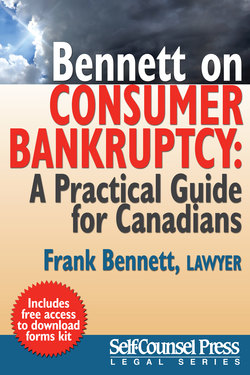Читать книгу Bennett on Consumer Bankruptcy - Frank Bennett - Страница 24
На сайте Литреса книга снята с продажи.
7. The Inspectors
ОглавлениеInspectors are persons who represent the creditors and guide the trustee in the deliberations and actions throughout the administration. Once a bankruptcy occurs, there may be a meeting of creditors if requested by the creditors or the trustee. There is seldom a creditors’ meeting in consumer bankruptcies. If a meeting is held, the creditors appoint representatives amongst themselves to discuss the bankrupt’s financial affairs with the trustee. Those representatives are called inspectors. In most cases, those representatives are present at the first meeting of creditors.
Under the Bankruptcy and Insolvency Act, there can be a maximum of five inspectors appointed. Usually, there is an odd number so that a deadlock vote does not occur, although the trustee may vote in the case of a tie. In consumer bankruptcies, there are usually no inspectors since there are no assets or very few assets to administer. Inspectors are paid a nominal amount for each meeting that they attend. Meetings are held to —
• discuss the method and the mechanics of the sale of the bankrupt’s assets,
• investigate the affairs of the bankrupt,
• authorize any examination of the bankrupt or others,
• authorize lawsuits to void transactions, and
• generally assist the trustee in making decisions.
The trustee relies on the advice of the inspectors since they represent the creditors. They are usually knowledgeable persons who supplied the bankrupt with goods, services, or money, and generally know much about the bankrupt’s business and affairs.
